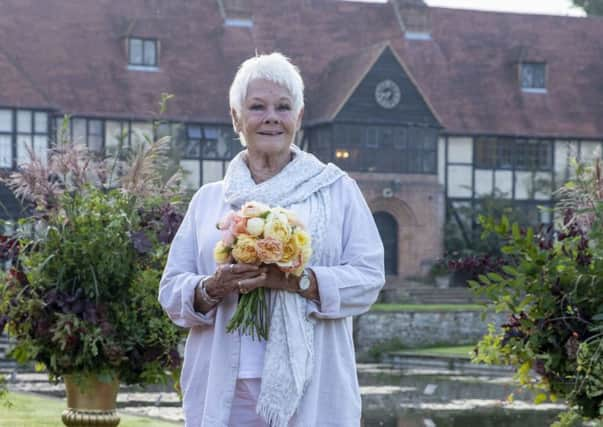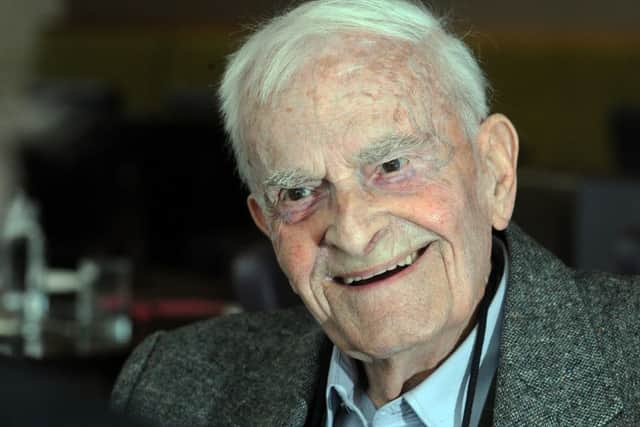Jayne Dowle: Why history's forgotten deserve blue plaques


Of late, this slightly melancholy frame of mind has led to me wondering what might happen when I’m no longer here to sit quietly watching the setting of the lemony winter sun across the valley. In other words, how long does it take for one person’s presence on earth to be forgotten, blown over entirely by the tumbleweed of time?
I’ll stop the introspection right there. The fact is that my life will live on through my children and their children and so on. They will be my legacy, that and a house full of books and old carrier bags.
Advertisement
Hide AdAdvertisement
Hide AdI’m not famous or special. But some people are and there is a row brewing in heritage circles about just how famous or special an individual must be in order to be remembered with the ultimate accolade – a plaque on the wall outside the place where they were born or died or where they achieved their greatest work.


The irony is of course that although such a plaque marks a historic moment, it is the ideal medium to communicate historical and interesting information in our highly-visual age. I’d argue that rather than resign the process to a dusty past, it brings it up to date. And it is easy to understand, whatever language it is in.
For instance, on a family trip to Paris this summer, our trudge through the featureless neighbourhood from the metro to the Eiffel Tower was enlivened by spotting a sign on an anonymous apartment building. It denoted the last resting place of the late President Francois Mitterrand.
It made me think of the blue plaque on the last home of Baroness Thatcher in Chester Square, Belgravia. When this grand townhouse went up for sale a couple of years ago, the ‘plaque factor’ was believed to have added a premium to the £35m price tag.
Advertisement
Hide AdAdvertisement
Hide AdIn the capital, where the argument has become most pertinent, the plaque is usually blue and the scheme is run by English Heritage. Across the country there are many similar arrangements, often overseen by the civic trusts and history associations.
Whatever the colour, the argument is the same. There will always be people who support a decision to nominate a particular individual and those who argue against it.
I remember the hoo-ha when I belonged to a local history group in Barnsley and some members wanted to honour a pioneering local photographer. You would not believe that a group of fairly amiable like-minded folk could be capable of such levels of sanctimonious pontification over whether long-dead Warner Gothard deserved a small circle of remembrance.
Anyway, Blue Plaque individuals honoured this year in the capital include actress Margaret Lockwood, music hall entertainers Flanders and Swann, Mary Poppins author P.L. Travers and the Bahaus designers Walter Gropius, Marcel Breuer and Laszlo Moholy-Nagy whose memorial adorns the iconic 1930s Isokon building in Belsize Park, North London.
Advertisement
Hide AdAdvertisement
Hide AdHowever, 35 applications have been turned down in the last 12 months due to the scheme’s strict criteria. For example, Hollywood star Ronald Colman, who won the Academy Award for best actor in the 1947 film, A Double Life, was rejected.
As was Test cricketer Albert Trott, the first – and only – player to have struck a ball so well it cleared the pavilion at Lord’s in 1899. Born in Melbourne, Australia, he defected to England and made his career in county cricket.
But while there have to be rules, a serious balance needs to be addressed. An organisation called Open Plaques, which collects data from schemes across the country, discovered that there are more plaques commemorating buildings and objects than there are those which honour women.
Notable men account for 6,618 plaques, compared to just 910 for women. A further 1,856 refer to an object, such as a house, a church or a gate.
Advertisement
Hide AdAdvertisement
Hide AdActress Dame Judi Dench, 83, has added her powerful voice to the call, backed by English Heritage, for more women to be nominated. Speaking at the launch of Margaret Lockwood’s plaque in the suburb of Upper Norwood, South London, she urged the public to, “nominate the women you admire, the women who did great and remarkable things throughout history and the women who did not go quietly”.
I second that, but we should also – in a world which throws up so few true heroes – think about other individuals worth of recognition regardless of gender
That’s why my nomination for a commemorative plaque of any colour – although I suspect he would not have favoured blue – is a special one and very close to my heart.
Surely the birthplace in Barnsley of author and social activist Harry Leslie Smith, who died earlier this month at the age of 95, should not go unremarked? If ever a man deserved his memory to live on and inspire others, he does.